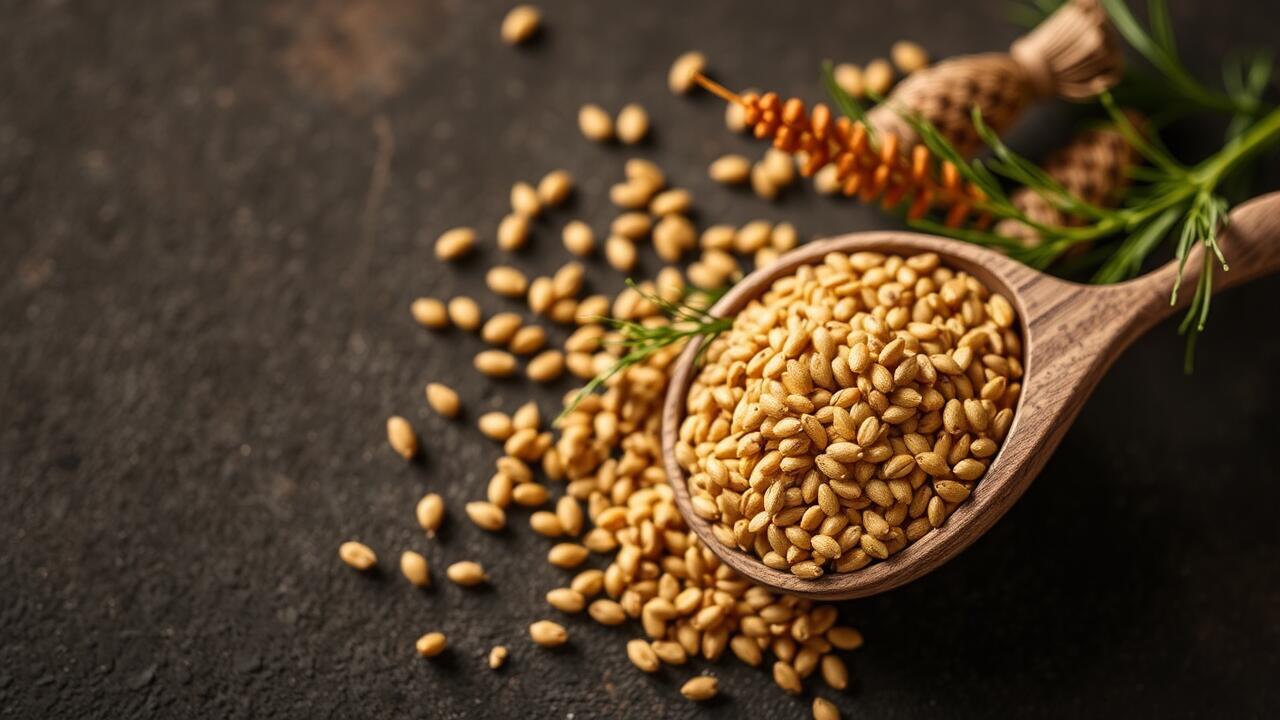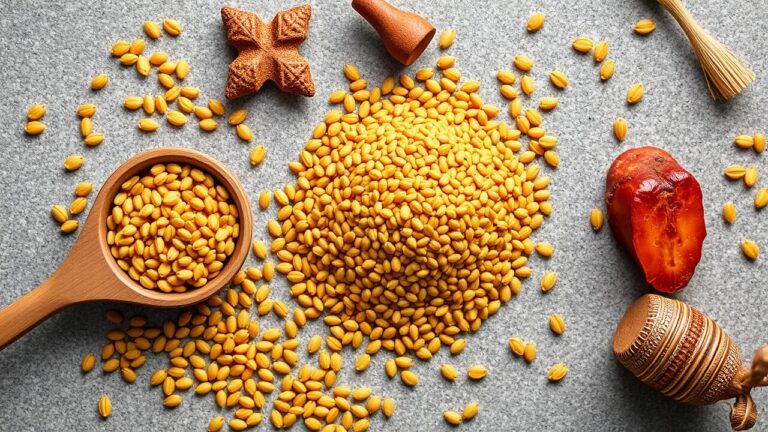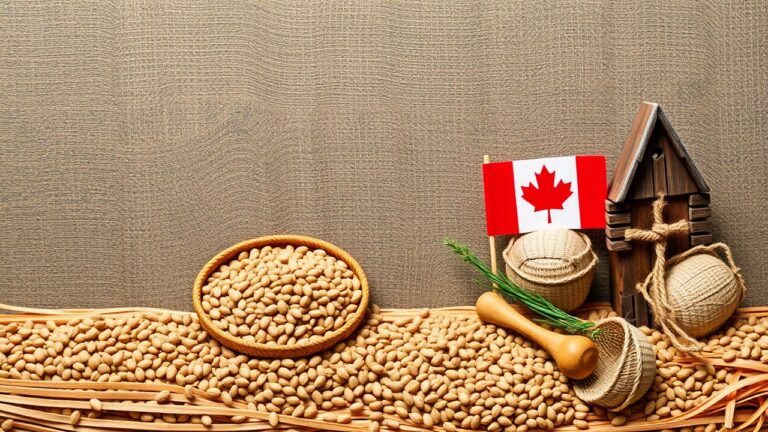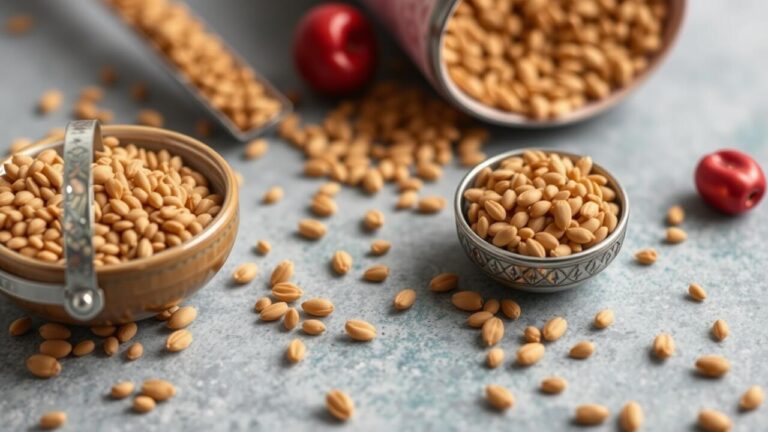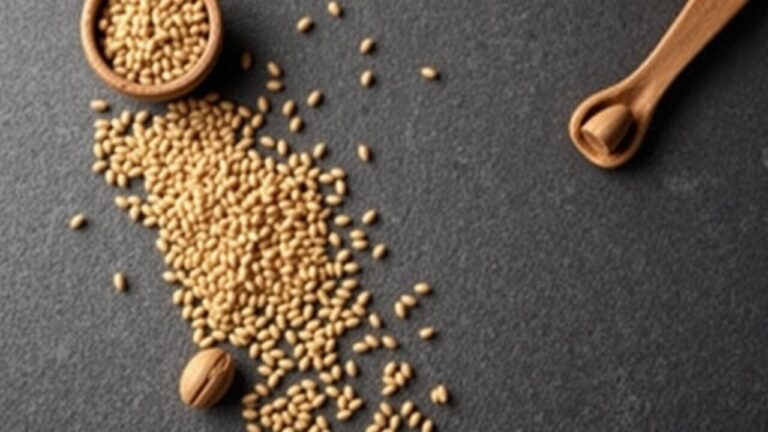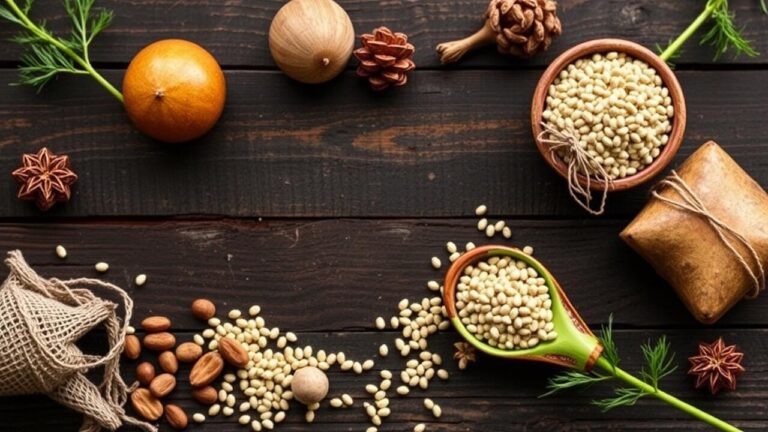Best Flaxseed for Baking
How to Incorporate Flaxseed into Recipes
Flaxseed, that little powerhouse of nutrition, can be effortlessly woven into a tapestry of baked delights, transforming not just their health benefits but also their texture in delightful ways. Ground flaxseed is the star player here, strutting its versatility across muffins, breads, and pancakes alike. When you’re looking to swap it for flour—oh yes!—a common trick is to replace up to 10% of your total flour weight with this nutty gem. This clever substitution keeps the recipe’s essence intact while introducing a rich flavor profile along with those oh-so-valuable omega-3 fatty acids.
And let’s talk about eggs; when recipes call for them, flaxseed steps right up as an outstanding binder. Crafting a flax egg is simple: mix one tablespoon of ground flaxseed with two and a half tablespoons of water, then let it sit for a few minutes until it transforms into something delightfully gelatinous. Voila! You’ve got yourself an equivalent to one egg in most culinary creations—a vegan baker’s dream come true! Just keep in mind that because flaxseed has quite the appetite for liquid, you might need to tweak moisture levels here and there; otherwise, the final batter could take on an unexpected consistency twist.
Tips for Adding Flaxseed to Your Baking
Flaxseed, oh the wonders it brings! Seamlessly weaving its way into an array of baking marvels, it amplifies both nutrition and flavor in ways that can surprise even the most seasoned bakers. Ah, but there’s a twist: ground flaxseed often reigns supreme over whole seeds! Why? Because it opens up a treasure trove of nutrients—absorption becomes your best friend here.
Picture this: swapping out 10 to 25 percent of the flour in your favorite recipe for that golden ground flaxseed—it’s as simple as pie (well, maybe not quite *that* simple). But wait! A little caution is warranted; you’ll likely need to tweak those moisture levels since our darling flaxseed meal has a knack for soaking up liquid like nobody’s business! This clever little swap doesn’t just ramp up fiber content—it also whispers hints of nutty goodness into every bite.
But hold on; let’s not overlook what makes flaxseed special. It’s hydrophilic—a fancy term meaning it loves water—and expands when kissed by moisture. What does that mean for your baked goods? Think muffins and quick breads bursting with added moisture and delight! Combine flaxseed with other wholesome ingredients, and you’re on track for some truly enchanting results. So go ahead—get adventurous with pancakes or cookies galore! With each culinary experiment comes deliciousness that’s sure to impress any palate while catering to diverse dietary whims.
| Recipe Type | Flour Replacement (%) | Moisture Adjustment (Liquid Increase) | Nutty Flavor Effect | Best Pairings |
|---|---|---|---|---|
| Muffins | 10-20% | Increase by 1-2 tbsp | Enhances flavor | Nuts, Berries |
| Pancakes | 15-25% | Increase by 2-3 tbsp | Subtle nuttiness | Chocolates, Fruits |
| Cookies | 10-15% | Increase by 1 tbsp | Rich flavor | Oats, Chocolate Chips |
| Quick Breads | 10-25% | Increase by 2-4 tbsp | Nutty undertones | Spices, Dried Fruits |
Flaxseed as an Egg Substitute
Flaxseed, oh that little powerhouse! It’s become quite the darling in the realm of egg substitutes, especially for those embarking on a vegan baking adventure. Picture this: you take whole flaxseeds and grind them into a fine meal—an alchemical transformation! Then, mix that golden dust with water. Voila! You’ve conjured up a concoction that mimics the magical binding and leavening capabilities of eggs, all while elevating the texture and structure of your baked creations. And let’s not forget about the bonus points for nutritional value!
Now, if you’re aiming to replace one solitary egg in your recipe, here’s a tried-and-true ratio: just one tablespoon of ground flaxseed paired with three tablespoons of water. Give it some time—about five to ten minutes—to sit back and relax until it morphs into a gel-like consistency resembling something straight out of culinary sorcery. This simple trick doesn’t just add moisture; it also injects your dish with delightful omega-3 fatty acids and fiber—a truly wholesome option for anyone navigating dietary restrictions or preferences!
The Ratio and Method for Vegan Baking
Flaxseed emerges as a remarkable substitute for eggs in the realm of vegan baking, imparting moisture and binding capabilities that are hard to ignore. Picture this: to replace a single egg, you simply blend one tablespoon of ground flaxseed with two and a half tablespoons of water. But don’t rush! Let this concoction sit for about five to ten minutes—watch as it thickens into a delightful gel-like substance, ready to be whisked into your batter.
Now, here’s where things get interesting: when incorporating flaxseed into your recipes, it’s crucial to pay attention to the overall moisture levels of your final creation. You may need to tweak those liquid ingredients just right to achieve that perfect texture you’re aiming for. And let’s not forget—the introduction of flaxseed can subtly shift the flavor profile of your baked goods, often bestowing upon them a nutty undertone that harmonizes beautifully with whole grain flours and spices alike. Don’t shy away from experimenting; adjusting quantities could lead you down the path toward discovering an exquisite balance between taste and texture!
Storing Flaxseed for Optimal Freshness
To keep the zing and nutritional punch of flaxseed intact, mastering the art of storage is essential—think cool, dark realms far removed from the glaring sun and scorching heat! Whole flaxseeds? They can lounge in an airtight container for months on end. But beware—the ground variety has a fleeting existence; its exposure to air hastens oxidation like a thief in the night. To preserve that vibrant freshness and those vital health perks, stashing ground flaxseed in your refrigerator is nothing short of genius.
When you’re on a shopping expedition for this superfood, why not go for whole seeds? Grinding them just before use guarantees you’ll capture every ounce of freshness and nutrients they have to offer! If pre-ground flaxseed is more your style, make sure it hails from a trusted brand—and don’t forget to scrutinize that expiration date! Storing it in small, opaque containers adds another layer of protection against light’s relentless assault—a true guardian against quality deterioration. And hey, don’t forget to routinely check and rotate your stash; doing so ensures you’ll always unleash the freshest flaxseed magic into your baking adventures!
Best Practices for Preserving Flaxseed Quality
To truly preserve the quality and nutritional goodness of flaxseed, one must navigate the intricate dance of proper storage. Whole flaxseeds, those little gems encased in their sturdy outer shell, boast a longer shelf life than their ground counterparts—an intriguing quirk of nature! Stashing them away in a cool, dark nook like your pantry or even better—a refrigerator—can dramatically prolong their freshness. And don’t forget the magic of airtight containers; they act as guardians against moisture and air that threaten to unleash rancidity.
Now, when it comes to ground flaxseed? Ah, that’s where things take a twist! The golden rule here is to tuck it safely in the fridge or freezer if you want to safeguard its nutrient treasure trove from spoiling. It’s wise to grind only what you need for immediate use because freshly milled flaxseed is a powerhouse bursting with omega-3 fatty acids and other delightful compounds. Keep your senses alert: regularly sniffing for off odors or inspecting for any bizarre appearances can save you from culinary mishaps while ensuring your beloved flaxseed retains its peak quality for all those baking adventures and more!
- Store whole flaxseeds in a cool, dark place for optimal shelf life.
- Use airtight containers to protect flaxseeds from moisture and air.
- Refrigerate or freeze ground flaxseed to preserve its nutritional value.
- Grind only the amount of flaxseed you need for immediate use.
- Regularly check flaxseed for off odors or unusual appearances.
- Keep flaxseed away from direct sunlight and heat sources.
- Label containers with the date of purchase or grinding to track freshness.
Common Baking Recipes Using Flaxseed
Incorporating flaxseed into your baking arsenal can truly transform the nutritional landscape and flavor profile of your delightful confections. Picture this: flaxseed meal, a game-changer in the realm of muffins, pancakes, and bread! Its nutty essence weaves an intricate tapestry of taste, while its fiber-rich goodness elevates your treats to healthier heights. Take banana bread, for instance; toss in some flaxseed and watch as it not only amplifies the flavor but also fortifies the recipe’s nutritional value—turning an indulgent slice into a guilt-free pleasure.
But wait—there’s more! Cookies sing with joy at the introduction of flaxseed, whether you swap it in as a partial flour replacement or use it to enhance texture. Think about classic favorites like oatmeal raisin or chocolate chip; just sprinkle in some ground flaxseed and voilà—you’re adding a powerful punch of omega-3 fatty acids! This adaptable ingredient melds effortlessly into batters and doughs alike, ensuring that even beloved recipes get a modern health twist without losing their charm. Flaxseed-laden baked goods aren’t merely sweet fixes for cravings—they’re tiny triumphs on the journey toward wellness!
Delicious Ideas for Flaxseed-Infused Treats
Imagine the delightful fusion of flavor and nutrition as you weave flaxseed into your baking adventures! Picture this: a sprinkle of ground flaxseed mingling with muffins or breads, injecting a nutty essence while cramming in fiber like it’s nobody’s business. Oh, but don’t stop there—dare to venture into recipes that embrace whole grains! The robust earthiness of flaxseed dances harmoniously with oats and whole wheat, creating a symphony for your taste buds.
Now let’s talk about breakfast—fluffy pancakes or golden waffles can become even more extraordinary when you toss in some flaxseed. Just think about it: a subtle crunch paired with health benefits that elevate your morning meal from ordinary to exceptional.
And cookies? They’re practically begging for an upgrade! Swap out a part of the flour for ground flaxseed and watch the magic unfold—a unique texture emerges alongside an enriched nutritional profile. Throw in chocolate chips or dried fruits; suddenly, those familiar flavors burst forth anew, thanks to the depth that flaxseed adds.
But wait! There’s more—the creation of energy bites is calling your name. Combine flaxseed with nuts and dried fruits to craft convenient snacks that fit perfectly within a healthy lifestyle. Embrace these tantalizing ideas, and you’ll unveil scrumptious treats infused with flaxseed goodness that cater not only to your palate but also to your commitment to well-being.
Potential Drawbacks of Flaxseed in Baking
Flaxseed, a tiny powerhouse packed with health perks, may not be the golden ticket for everyone when it comes to baking. For those who harbor specific allergies or sensitivities to this little seed, the consequences could range from mild annoyance to serious reactions. And let’s not overlook the fiber factor—while beneficial in many ways, that high fiber content can wreak havoc on some digestive systems, especially for folks unaccustomed to such a fibrous influx or those who might overindulge.
But wait! There’s more to consider. The very essence of your baked creation—the texture and flavor—can take an unexpected turn thanks to flaxseed’s presence. That subtly nutty flavor? It’s like a quirky guest at a dinner party—not always welcomed by every dish on the table. Plus, when flaxseed steps in as an egg substitute, its watery nature could throw off the entire consistency of your batter or dough—a recipe for potential chaos! So yes, adjustments will likely be necessary; using flaxseed is less about straightforward substitution and more about navigating through culinary twists and turns before reaching that perfect bake.
Considerations for Allergies and Digestive Health
Flaxseed, hailed for its nutritional prowess and generally embraced by many, isn’t without its quirks. A rare but notable few might find themselves on the wrong end of a reaction—yes, flaxseed allergies do exist! The symptoms? They can sneakily mirror those pesky food allergy signs: itching, swelling, or that all-too-familiar gastrointestinal turmoil. For anyone with a history of allergic sensitivities or tendencies lurking in their medical background, it’s wise to tread carefully and perhaps have a chat with a healthcare expert before diving headfirst into the world of flaxseed.
But wait—there’s more! Flaxseed’s impact on digestion isn’t one-size-fits-all; it dances differently depending on who’s consuming it. Many revel in its high fiber glory, enjoying smooth sailing through digestive channels and an uptick in regularity. Yet for some unsuspecting souls unaccustomed to such fiber-packed delights, an abrupt surge can spell bloating or discomfort—a less-than-pleasant surprise indeed! To sidestep these potential pitfalls while reaping the myriad health rewards flaxseed has to offer, consider easing into this nutritious addition slowly—and don’t forget to stay hydrated. It’s about striking that perfect balance!
Conclusion
Integrating flaxseed into your baking escapades can elevate not just the nutritional value but also the tantalizing flavors of a myriad of recipes. Its adaptability knows no bounds, gracing everything from hearty breads to decadent desserts—a true gem for those who prioritize health while dabbling in the delightful world of plant-based ingredients.
Yet, amidst its myriad benefits lies a caveat worth considering: some folks might encounter digestive woes when indulging in hefty servings. Navigating the art of using flaxseed wisely can help sidestep these potential pitfalls, all while unlocking its full spectrum of perks right in your culinary creations.

